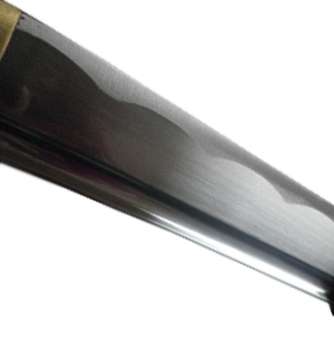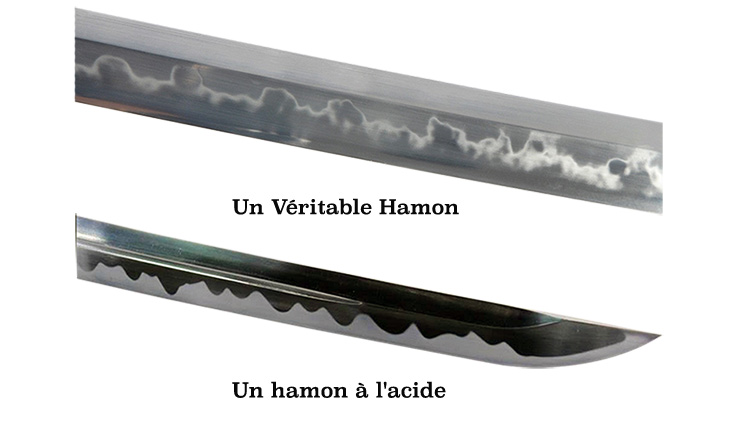Selective quench or hamon
A thermal treatment allows obtaining a blade with an edge extremely hard, but keeping suppleness concerning the other part of this blade. This processing consists in spreading a mixture of refractory clay, stone powder and coal on the blade. A slight thickness on the edge and on the contrary, a good thickness, up to more than one inch, on the other part of the blade.
So, this treatment will only modify the steel of the edge, where it permits to create martensite, quite saturated with carbon. To do this, the blade has to be warmed up to 800° before being quickly plunged in water or oil. Of course you may find false hamons, so there are some tricks to detect them.
For example below is a hamon made by mean of a grindstone. As you can easily see, the hamon is abnormally composed of vertical lines.
So, this treatment will only modify the steel of the edge, where it permits to create martensite, quite saturated with carbon. To do this, the blade has to be warmed up to 800° before being quickly plunged in water or oil. Of course you may find false hamons, so there are some tricks to detect them.
For example below is a hamon made by mean of a grindstone. As you can easily see, the hamon is abnormally composed of vertical lines.

Some hamons are made by mean of acid. They are esthetic but without any technical interest. So they would not be charged the price of a normal hamon. These acid-made hamons are more visible. Actually it is not so true because nowadays there are some forges which succeed in doing real and very visible hamons. These forges are in the minority but you can easily believe this mention. Rather have a look and notice the difference, quite obvious.

A katana with a real hamon (quenched with clay) often costs between 500 and 1000 Euros, but less if you find 1045 or 1060 katanas (however they are not so efficient, sabers really not so sharp).





